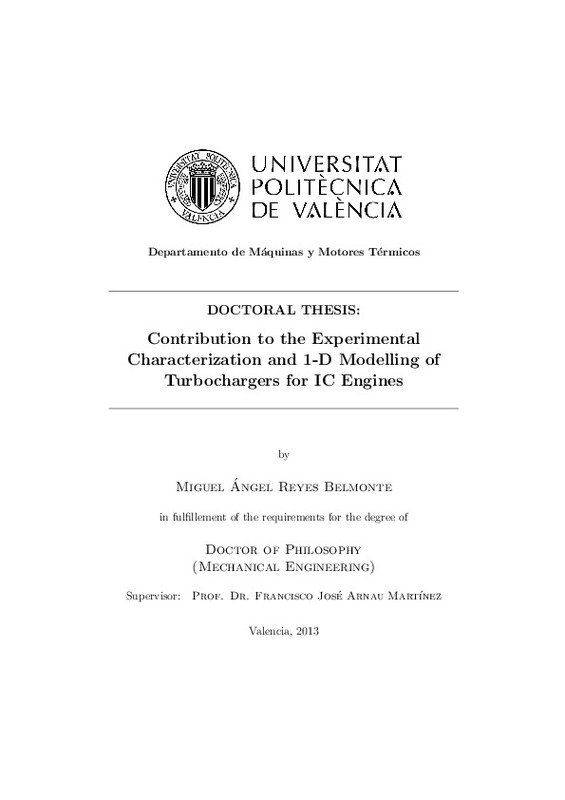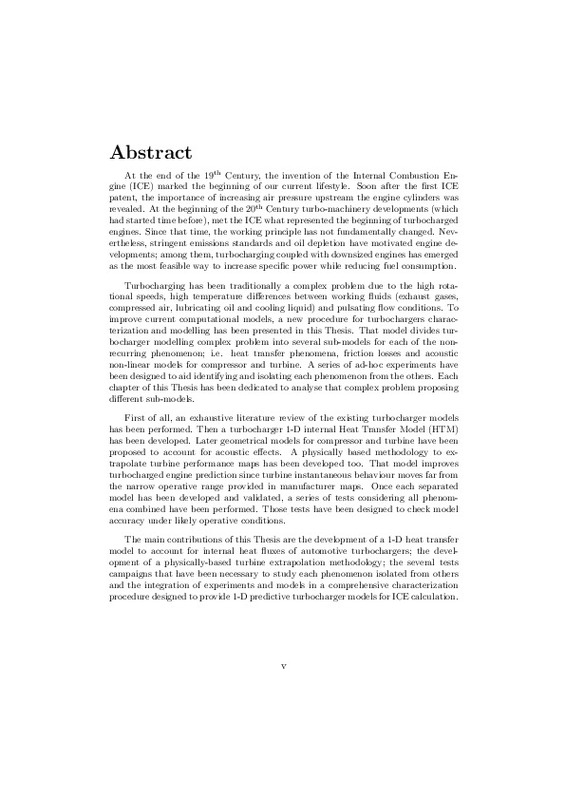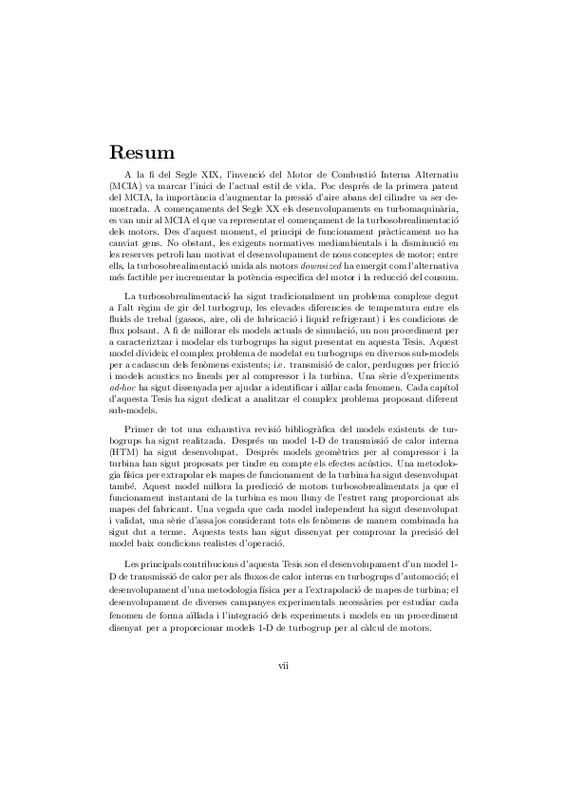|
Resumen:
|
At the end of the 19th Century, the invention of the Internal Combustion Engine
(ICE) marked the beginning of our current lifestyle. Soon after the first ICE
patent, the importance of increasing air pressure upstream the ...[+]
At the end of the 19th Century, the invention of the Internal Combustion Engine
(ICE) marked the beginning of our current lifestyle. Soon after the first ICE
patent, the importance of increasing air pressure upstream the engine cylinders was
revealed. At the beginning of the 20th Century turbo-machinery developments (which
had started time before), met the ICE what represented the beginning of turbocharged
engines. Since that time, the working principle has not fundamentally changed. Nevertheless,
stringent emissions standards and oil depletion have motivated engine developments;
among them, turbocharging coupled with downsized engines has emerged
as the most feasible way to increase specific power while reducing fuel consumption.
Turbocharging has been traditionally a complex problem due to the high rotational
speeds, high temperature differences between working fluids (exhaust gases,
compressed air, lubricating oil and cooling liquid) and pulsating flow conditions. To
improve current computational models, a new procedure for turbochargers characterization
and modelling has been presented in this Thesis. That model divides turbocharger
modelling complex problem into several sub-models for each of the nonrecurring
phenomenon; i.e. heat transfer phenomena, friction losses and acoustic
non-linear models for compressor and turbine. A series of ad-hoc experiments have
been designed to aid identifying and isolating each phenomenon from the others. Each
chapter of this Thesis has been dedicated to analyse that complex problem proposing
different sub-models.
First of all, an exhaustive literature review of the existing turbocharger models
has been performed. Then a turbocharger 1-D internal Heat Transfer Model (HTM)
has been developed. Later geometrical models for compressor and turbine have been
proposed to account for acoustic effects. A physically based methodology to extrapolate
turbine performance maps has been developed too. That model improves
turbocharged engine prediction since turbine instantaneous behaviour moves far from
the narrow operative range provided in manufacturer maps. Once each separated
model has been developed and validated, a series of tests considering all phenomena
combined have been performed. Those tests have been designed to check model
accuracy under likely operative conditions.
The main contributions of this Thesis are the development of a 1-D heat transfer
model to account for internal heat fluxes of automotive turbochargers; the development
of a physically-based turbine extrapolation methodology; the several tests
campaigns that have been necessary to study each phenomenon isolated from others
and the integration of experiments and models in a comprehensive characterization
procedure designed to provide 1-D predictive turbocharger models for ICE calculation.
[-]
|













